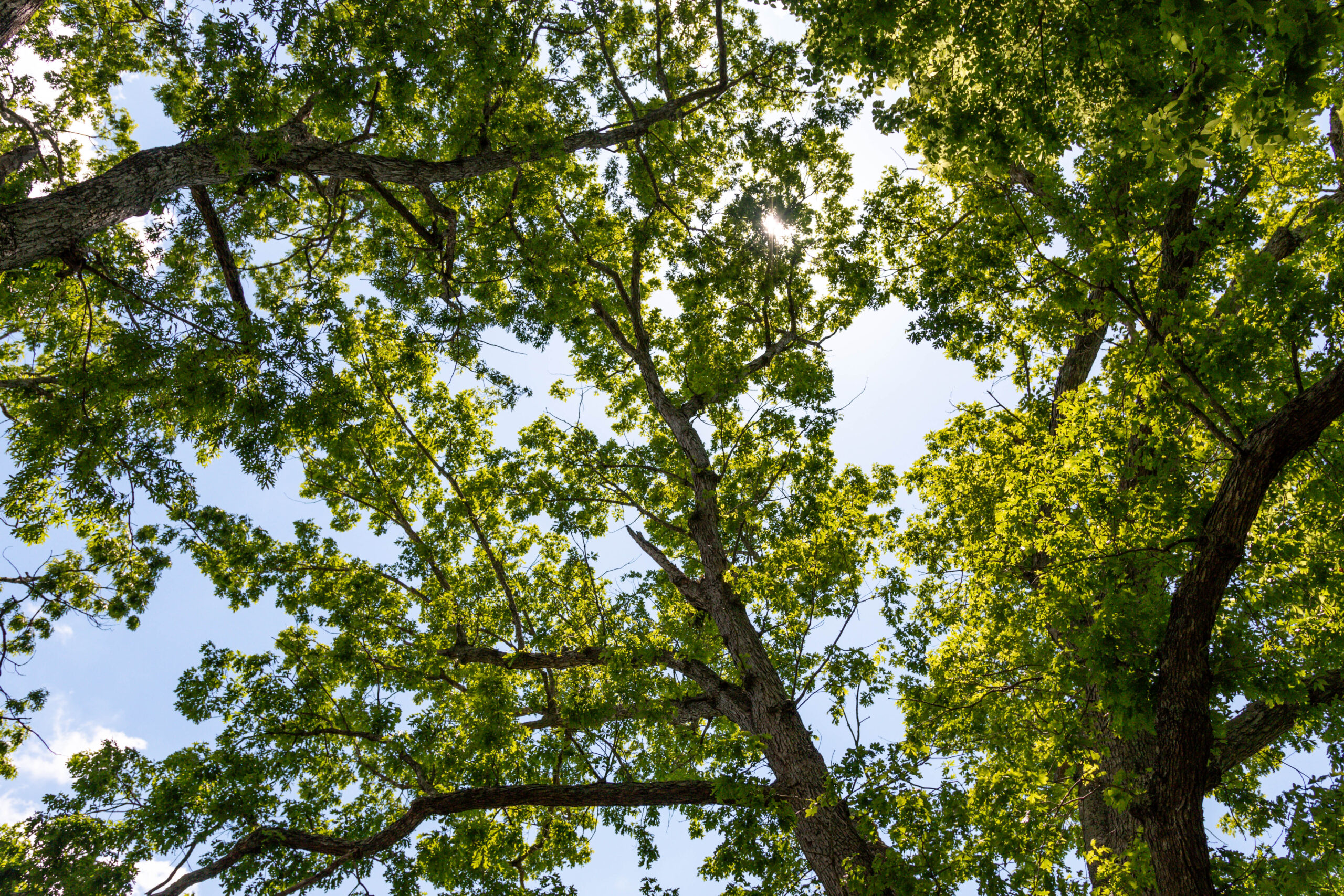When we are having a bad day, lots of people choose to take a walk or escape somehow to nature. Nature helps us destress and grounds us after getting stressed out, one of the largest contributors to this calming effect is trees. Along with the psychological effects of trees and nature, they provide a surplus of environmental benefits that substantially increase the overall value and benefits of trees. These benefits have been broken down into five categories: health and social well-being, cognitive development and education, economy and resources, climate change mitigation and habitat, and green infrastructure (Turner).
One of the most well-known benefits of planting trees is decreasing air pollution; trees capture carbon, other pollutant gasses, and particulate matter. In the United States, it is estimated that urban trees remove 711,000 metric tons of air pollution each year, areas with a large amount of air pollution tend to produce a larger population of people that develop asthma (Turner). In addition to physically reducing harmful pollutants in the atmosphere, just having a view of trees can help patients recover in the hospital. Through community planning and advocacy programs trees can help bring people together, so not only can trees increase community bonds but it is shown that areas with an increase in trees show a decrease in crime, and overall trees make people feel safer (Turner).
In a similar example to a view of trees helps patients to recover in the hospital, having a view of trees has immense benefits to students in a classroom. A study showed that students having a view of trees and greenery had substantially better test scores measuring attention when compared to students in a classroom without a view of greenspaces, the study also showed that students with a view had improved classroom engagement and future higher graduation rates (Turner). Trees present a sense of calm that makes an environment more conducive to learning and less stressful. A different study has also shown that green environments are related to reduced symptoms of ADD and ADHD (Turner).
A less obvious benefit of trees is how they support the economy. Trees reduce energy use, remove pollution from the air, increase property values, develop the local economy, and support tourism; in the United States it is estimated that trees provide $18.3 billion in annual value due to carbon sequestration, air pollution removal, reduced building energy use, and avoided pollutant emissions (Turner). Large mature trees produce more benefits than small street trees, so to achieve maximum benefits it is important to keep mature trees healthy. Trees can also be important in supplying food and medicine, in New York City around 88% of their tree species provide resources that can be used for food and medicine (Turner). For underprivileged areas, fruit trees can be extremely beneficial because not only do they provide the aforementioned benefits they also provide a steady food supply.
The saying “plant a trillion trees to stop climate change” has been floating around the last couple years, and while this goal seems unattainable it is true that trees can help reduce the effects of climate change. The largest way trees contribute to stopping climate change is by sequestering carbon, in the United States urban trees sequester 22.8 million tons of carbon each year and the urban forest as a whole stores 700 million tons of carbon (Turner). Considering one of the main contributors to climate change is the increase in carbon in the atmosphere, no wonder why they have made an international goal of planting a trillion trees. Along with storing carbon, they also provide shade and cool areas through evapotranspiration; in urban areas they significantly decrease the urban heat island effect by cooling a city an average of 1.9℃ but can decrease the temperature a maximum of 9℃ in some areas (Turner).
Another large issue with the increase in urban areas is the increase in impervious surfaces which leads to runoff. As it rains, the water washes all the pollutants present on the city streets into our local waterways and ecosystems, runoff can also damage property through erosion. Trees can help capture the runoff and they also filter and remove all the pollutants present in the water, therefore “improving the quality” of runoff water (Turner). Water is an extremely important resource and trees provide a natural filtration system that we should utilize.
Before planting trees, it is important to make sure you are planting a tree that is going to survive and thrive in your area. It is also important to understand any maintenance or care the tree will need in the future. If you fail to properly consider these aspects the trees can cause disservices, the benefits will still outweigh the negatives, but the tree can be a nuisance to the property owner if the trees anatomy and physiology was not properly considered from the start. If you are unsure what trees are best suitable for your land it is best to do research prior to planting or consult an arborist. Trees are a beautiful addition to any property and provide immense benefits if done properly from the start. They provide such a large range of benefits to any property that every property owner should be considering adding them to their yards.
Work Cited
Turner, Skoff, Jessica B., and Nicole Cavender. “The Benefits of Trees for Livable and Sustainable Communities.” Plants, People, Planet, vol. 1, no. 4, Oct. 2019, pp. 323–335. EBSCOhost, doi:10.1002/ppp3.39.
About the Author:
Plant Health Care Technician & Social Media Intern
Lexi Schnell
Lexi has joined the team this summer to assist with plant health care and run our social media accounts. She is majoring in Environmental Resource Management and is double minoring in Ecological Cities and Forestry at Virginia Tech.
Photos:


